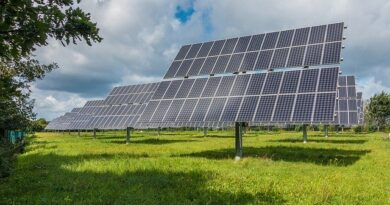Wet Bulb Temperature (WBT)
Context:
Recently, part 2 of the sixth assessment report of Intergovernmental Panel on Climate Change (IPCC), emphasized on the trend in the ‘Wet Bulb Temperature in South Asia.
Contents
Wet Bulb Temperature
- The wet-bulb temperature (WBT) is the temperature read by a thermometer covered in water-soaked cloth (wet-bulb thermometer) over which air is passed.
- At 100% relative humidity, the wet-bulb temperature is equal to the air temperature (dry-bulb temperature); at lower humidity the wet-bulb temperature is lower than dry-bulb temperature because of evaporative cooling.
- WBT is a limit that considers heat and humidity beyond which humans can not tolerate high temperatures.
- The Wet Bulb temperature is the temperature of adiabatic saturation. This is the temperature indicated by a moistened thermometer bulb exposed to the air flow.
- An adiabatic process is one in which no heat is gained or lost by the system.
- The wet-bulb temperature is defined as the temperature of a parcel of air cooled to saturation (100% relative humidity) by the evaporation of water into it, with the latent heat supplied by the parcel.
- A wet-bulb thermometer indicates a temperature close to the true (thermodynamic) wet-bulb temperature. The wet-bulb temperature is the lowest temperature that can be reached under current ambient conditions by the evaporation of water only.
- Even heat-adapted people cannot carry out normal outdoor activities past a wet-bulb temperature of 32 °C (90 °F), equivalent to a heat index of 55 °C (130 °F).
- The theoretical limit to human survival for more than a few hours in the shade, even with unlimited water, is 35 °C (95 °F) – theoretically equivalent to a heat index of 70 °C (160 °F), though the heat index doesn’t go that high.
How It will Impact India?
- Lucknow and Patna, were among the cities predicted to reach wet-bulb temperatures of 35°C if emissions continued to rise, while Bhubaneswar, Chennai, Mumbai, Indore, and Ahmedabad are ‘at risk’ of reaching wet-bulb temperatures of 32°C-34°C with continued emissions.
- With continuing emissions, parts of central India including Vidarbha are at risk of exceeding wet bulb temperatures of 32-34°C.
- This will have consequences such as a rise in heat-wave linked deaths or reduced productivity.
- Relying on artificial cooling to cope with the growing heat would supercharge energy demand and leave many people dangerously exposed to power failures.
- It would also abandon the most vulnerable members of society and doesn’t help those who have to venture outside.
What are Dew Point and Dry Bulb Temperatures?
- Dry Bulb Temperature:
- The Dry Bulb temperature, usually referred to as “air temperature”, is the air property that is most commonly used. When people refer to the temperature of the air they are normally referring to the dry bulb temperature.
- The Dry Bulb Temperature refers basically to the ambient air temperature. It is called “Dry Bulb” because the air temperature is indicated by a thermometer not affected by the moisture of the air.
- Dry-bulb temperature can be measured using a normal thermometer freely exposed to the air but shielded from radiation and moisture.
- The dry-bulb temperature is an indicator of heat content.
- Dew Point Temperature:
- The Dew Point is the temperature where water vapour starts to condense out of the air (the temperature at which air becomes completely saturated).
- Above this temperature the moisture stays in the air.
- If the dew-point temperature is close to the dry air temperature – the relative humidity is high.
- If the dew point is well below the dry air temperature – the relative humidity is low.
- The Dew Point temperature is always lower than the Dry Bulb temperature and will be identical with 100% relative humidity (the air is at the saturation line).
- The Dew Point is the temperature where water vapour starts to condense out of the air (the temperature at which air becomes completely saturated).
Source: The Hindu
You can find many articles on ENVIRONMENT (part of GS III) in our website. Go through these articles share with your friends and post your views in comment section.
Discover more from Simplified UPSC
Subscribe to get the latest posts sent to your email.


